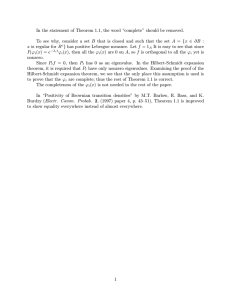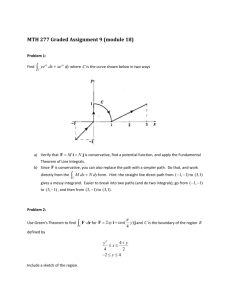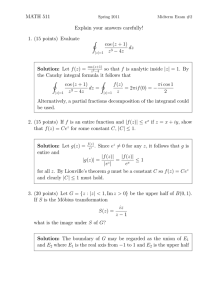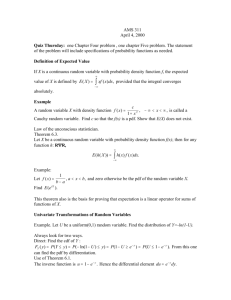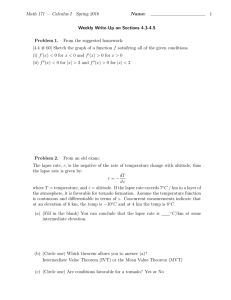______ §Transformation of Two Random Variables • Theorem: Let X
advertisement
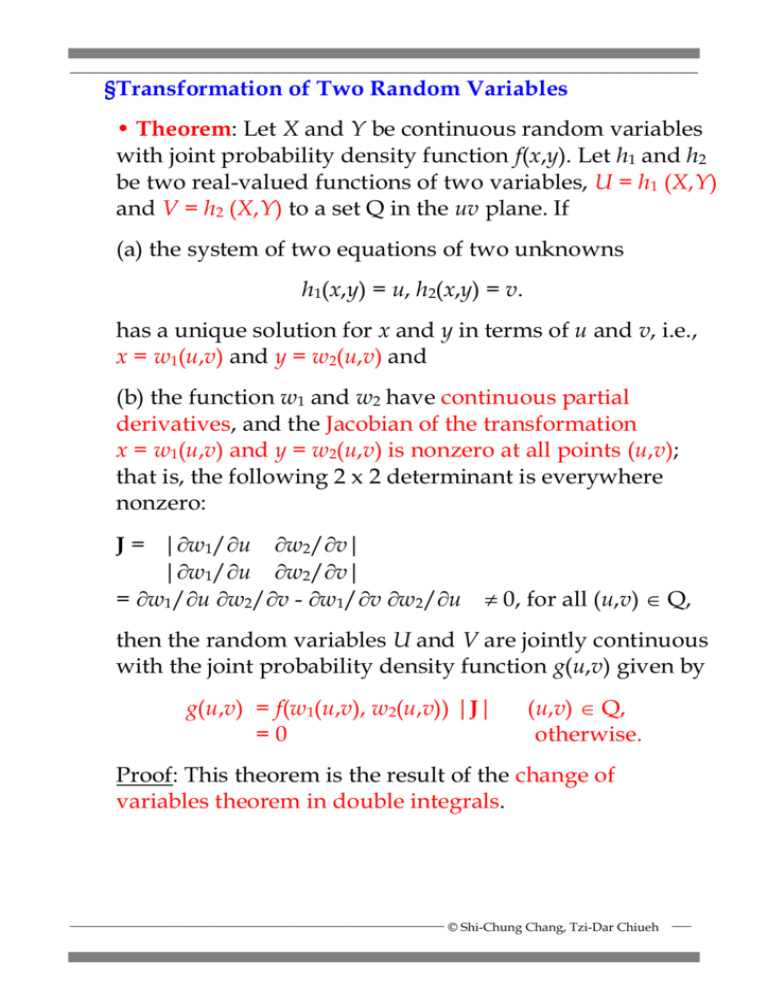
_________________________________________________________________________________
§Transformation of Two Random Variables
• Theorem: Let X and Y be continuous random variables
with joint probability density function f(x,y). Let h1 and h2
be two real-valued functions of two variables, U = h1 (X,Y)
and V = h2 (X,Y) to a set Q in the uv plane. If
(a) the system of two equations of two unknowns
h1(x,y) = u, h2(x,y) = v.
has a unique solution for x and y in terms of u and v, i.e.,
x = w1(u,v) and y = w2(u,v) and
(b) the function w1 and w2 have continuous partial
derivatives, and the Jacobian of the transformation
x = w1(u,v) and y = w2(u,v) is nonzero at all points (u,v);
that is, the following 2 x 2 determinant is everywhere
nonzero:
J = |w1/u w2/v|
|w1/u w2/v|
= w1/u w2/v - w1/v w2/u
0, for all (u,v) Q,
then the random variables U and V are jointly continuous
with the joint probability density function g(u,v) given by
g(u,v) = f(w1(u,v), w2(u,v)) |J|
=0
(u,v) Q,
otherwise.
Proof: This theorem is the result of the change of
variables theorem in double integrals.
__________________________________________________________
© Shi-Chung Chang, Tzi-Dar Chiueh
___
_________________________________________________________________________________
* Example: Box-Muller Theorem (Generation of Normal
r.v.)
Let X and Y be two independent uniform random
variables over (0,1); show that the random variables
U = cos(2X)(-2lnY)0.5 and V = sin(2X)(-2lnY)0.5
are independent standard normal random variables.
Solution: We have
u2 + v2 = -2lny, y = w2 = e -(u2+v2)/2.
cos(2x) = u/(u2+v2)0.5, sin(2x) = v/(u2+v2) 0.5
x = w1 = (1/2cos-1(u/(u2+v2) 0.5) .
The first condition is satisfied. Next the Jacobian is
w1/u w2/v - w1/v w2/u
= {(-v)/[2(u2+v2)]}{ (-v) e -(u2+v2)/2} {u/[2(u2+v2)]}{ (-u) e -(u2+v2)/2}
= (1/2) e -(u2+v2)/2 0.
We have the joint pdf of U and V is given by
g(u,v) = f (x,y)|J| = f (x,y) (1/2) e -(u2+v2)/2
= (1/2)e -(u2+v2)/2.
Integrating over v and u, respectively, one obtains
gU(u) = (1/2)0.5e -u2/2 and gV(v) = (1/2)0.5e -v2/2 .
So U and V are independent standard normal random
variables.
__________________________________________________________
© Shi-Chung Chang, Tzi-Dar Chiueh
___

